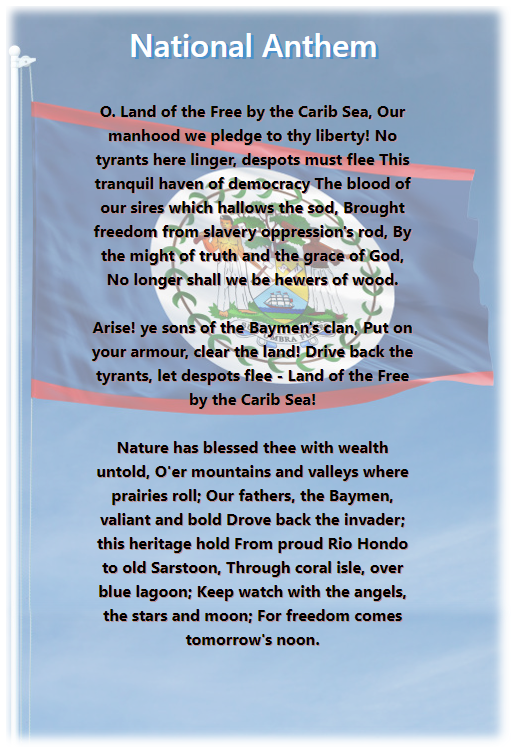National Symbols Of Belize
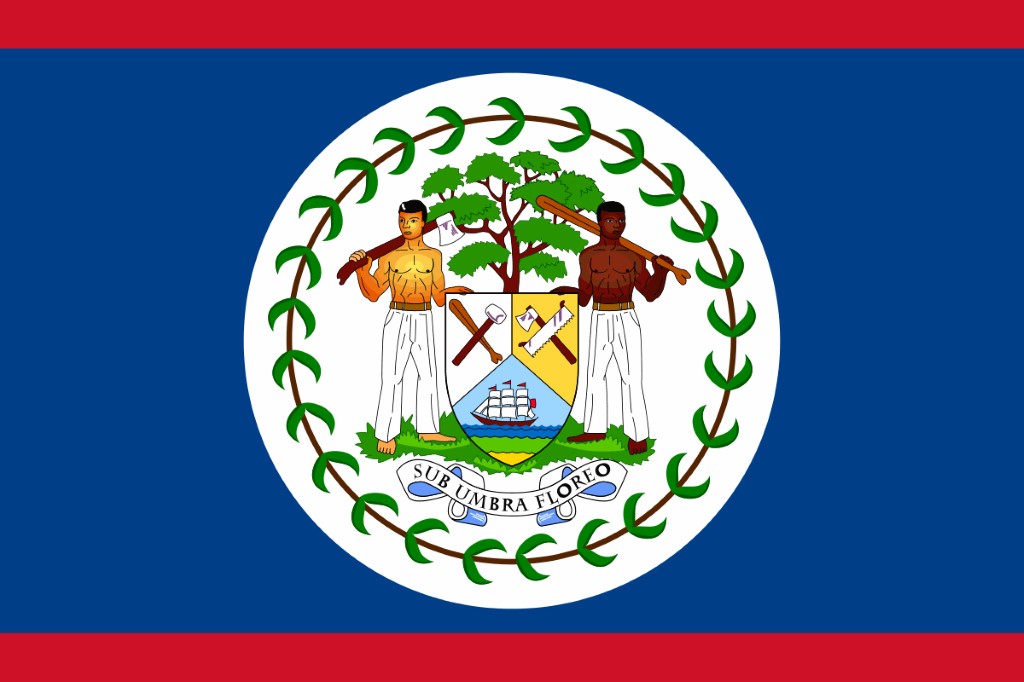
The red, white and blue flag of Belize is a symbol of the unity of our nation. The design selected is a royal blue flag with one horizontal red stripe at the top, one at the bottom, and a white circle with the Coat of Arms in the center.
The 50 olive leaves that border around the perimeter of the Coat of arms symbolize the year of 1950 when Belize, then British Honduras, began its quest for Independence. The Mahogany Tree represents the country’s economic foundation. The two
men on either side of the tree represent the log wood workers. The fairer carries an axe which symbolizes the log wood cutters and the darker carries an oar to symbolize how the workers traveled by river to find and transport the log-wood.
Under the Mahogany Tree is a shield separated into three – the left is an oar and squaring axe, the right is a saw and beating axe, and the base has a ship in full sail. Directly below the shield is the National Motto, “Sub Umbra Floreo”, in
Latin which translates to “Under the Shade I Flourish” referring to the shade of the Mahogany Tree.
National Bird
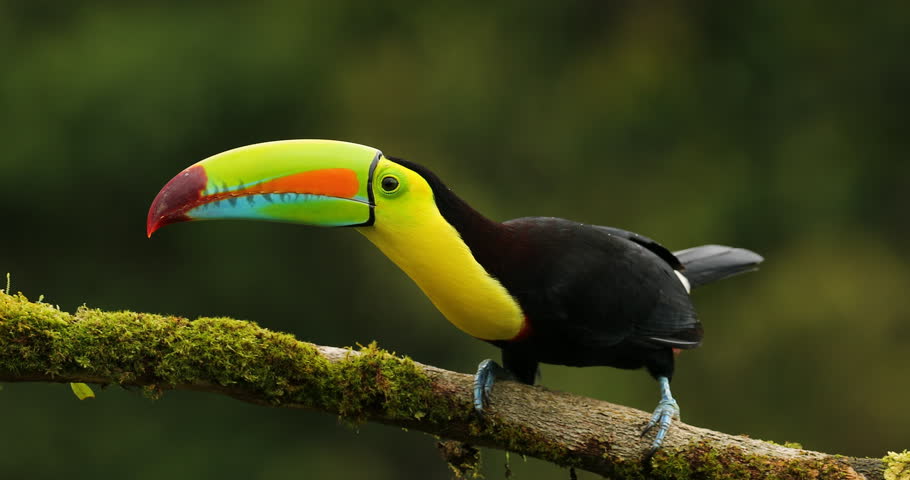
The Keel Billed Toucan is the National Bird of Belize. It is known for its great, canoe-shaped bill, brightly coloured green, blue, red and orange feathers. The bird is about 20 inches in overall length. It is mostly black with bright yellow cheeks and chest, red under the tail and a distinctive white patch at the base of the tail.
The toucan's bill is amazingly dextrous and allows the bird to feed on a variety of tropical forest fruits, being their primary scource of food. It feeds by snipping off the fruit and flipping its head back to gulp the fruit whole. Toucans will also feed on insects, lizards, and even the eggs of smaller birds. The Keel-billed toucans are a very social birds and can often be seen in flocks of six or more birds. They are found throughout Belize's forests and nest in holes in tree trunks.
Even though they resemble hornbills of Asia, toucans are more closely related to woodpeckers and barbets. Its massive bill is believed to help facilitate heat loss, as it is made of spongy hollow bone and network of blood vessels covered by a layer of keratin.
National Flower
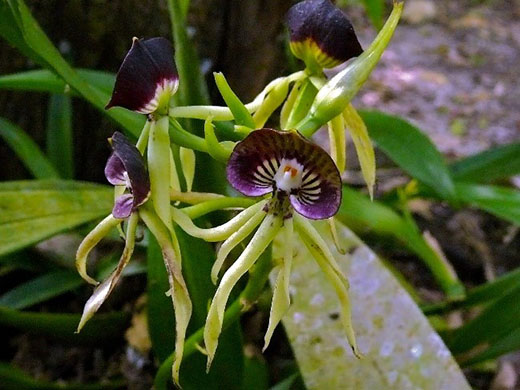
The Black Orchid is the National Flower of Belize. This orchid grows on trees in damp areas, and flowers nearly all year round. Its clustered bulb like stems vary in size up to six inches long and carry two or three leaves. The black orchid flower has greenish-yellow petals and sepals with purple blotches near the base. The “lip” (one petal of special construction, which is the flower’s showiest) is shaped like a valve of a clam shell (hence the name Encyclia Cochleatum) and is deep purple-brown, almost black, with conspicuous radiating purple veins.
Black orchids are found in Central America, The West Indies, Colombia, Venezuela and southern Florida where they are endangered. This species are well liked for their beauty and are easy to grow.
National Animal
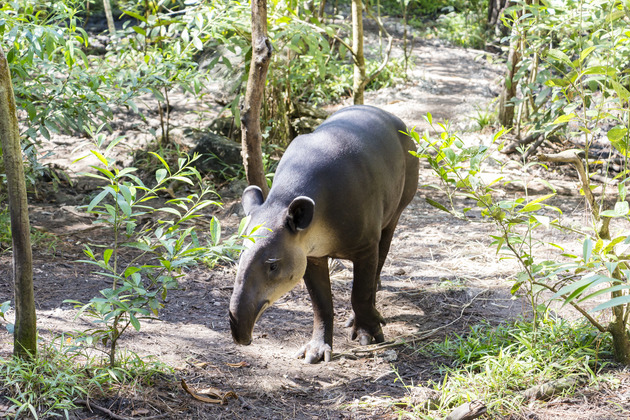
The Baird's Tapir or Mountain Cow is the National Animal of Belize. In spite of it’s local name, the tapir is not a cow. It is closely related to the horse and is also kin to the rhinoceros. Its general colour is dusty brown with a white fringe around the eyes and lips, white tipped ears and occasional white patches of fur on the throat and chest. The tapir is a stoutly built animal with short legs, about the size of a cow and weighs up to 600 pounds.
One of the noticeable features of the tapir is its prehensile nose, which functions like a shortened version of an elephant’s trunk. This organ is highly effective in locating and taking advantage of opportunities to feed. The main diet of tapirs includes plant matter such as twigs, flowers, sedges, grasses and fallen fruit. The tapir eats some plants during certain times of the year but avoids them at other periods in the year. Prickles and biting ants hardly deter these animals from consuming most plants.
Baird’s tapirs spend most of their walking hours feeding on several species in a small area, feeding only on a single species within a small area, or grabbing and eating various plants while moving.
National Tree
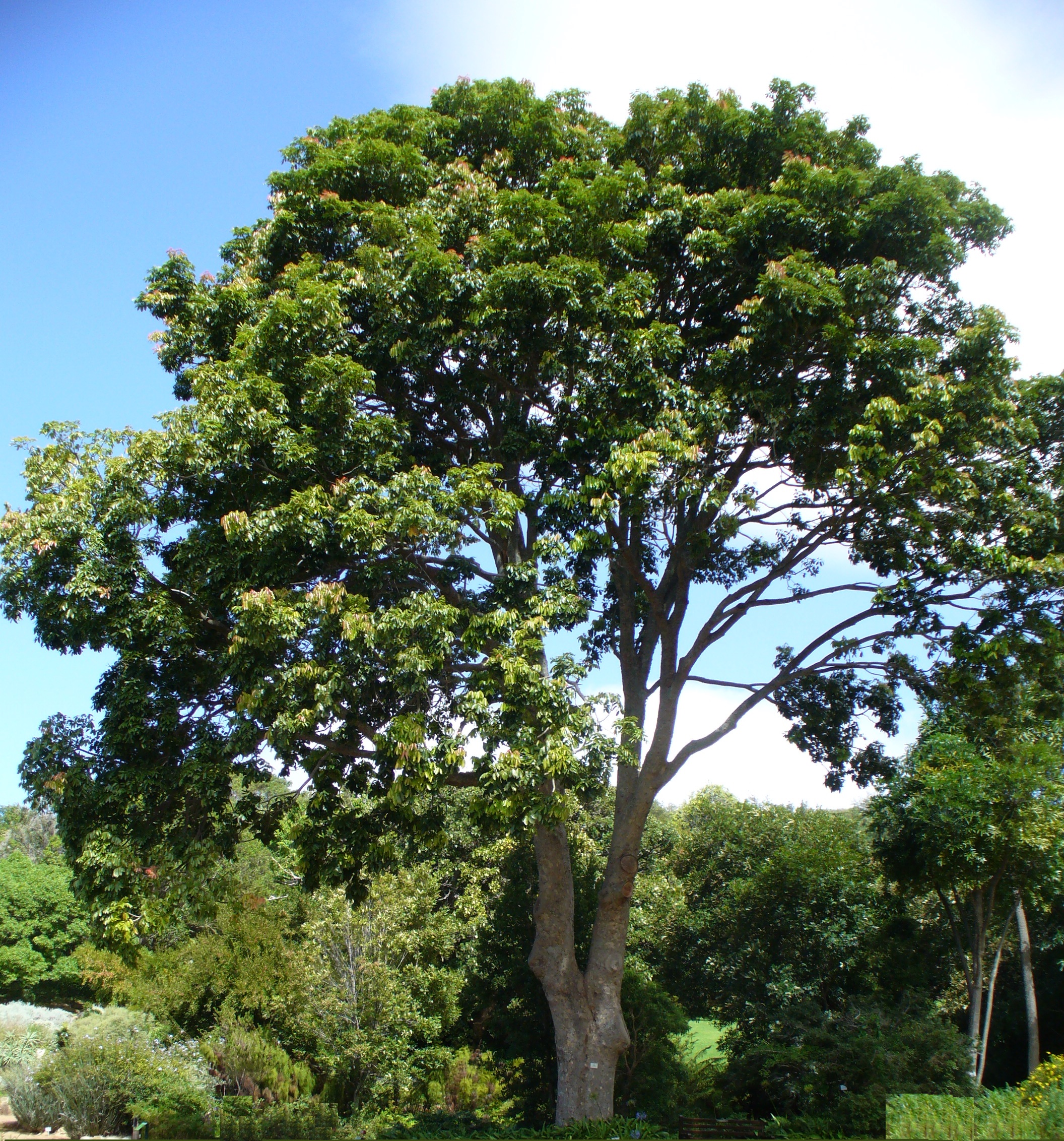
The Mahogany Tree is the National Tree of Belize. It's one of the magnificent giants of the Belize rainforest. Rising straight and tall to over a hundred feet from great buttresses at the roots, it emerges above the canopy of the surrounding trees with a crown of large, shining green leaves. It sheds its large compound leaves between May and June anually. Each compound leaf blade is about 40-45 cm long and 23-25 cm wide. Each leaflet can vary between 14-20 cm long and 5-7 cm wide. These leaves turn from green to brown in May which makes the trees visible from miles away.
British settlers exploited the forest for mahogany, beginning around the middle of the 17th century. It was originally exported to the United Kingdom in the form of squared logs, but shipment now consists mainly of sawn lumber. The mahogany tree forms part of Belize’s Coat of Arms. The motto “Sub Umbra Floreo” means: Under the shade (of the mahogany tree) I flourish.

